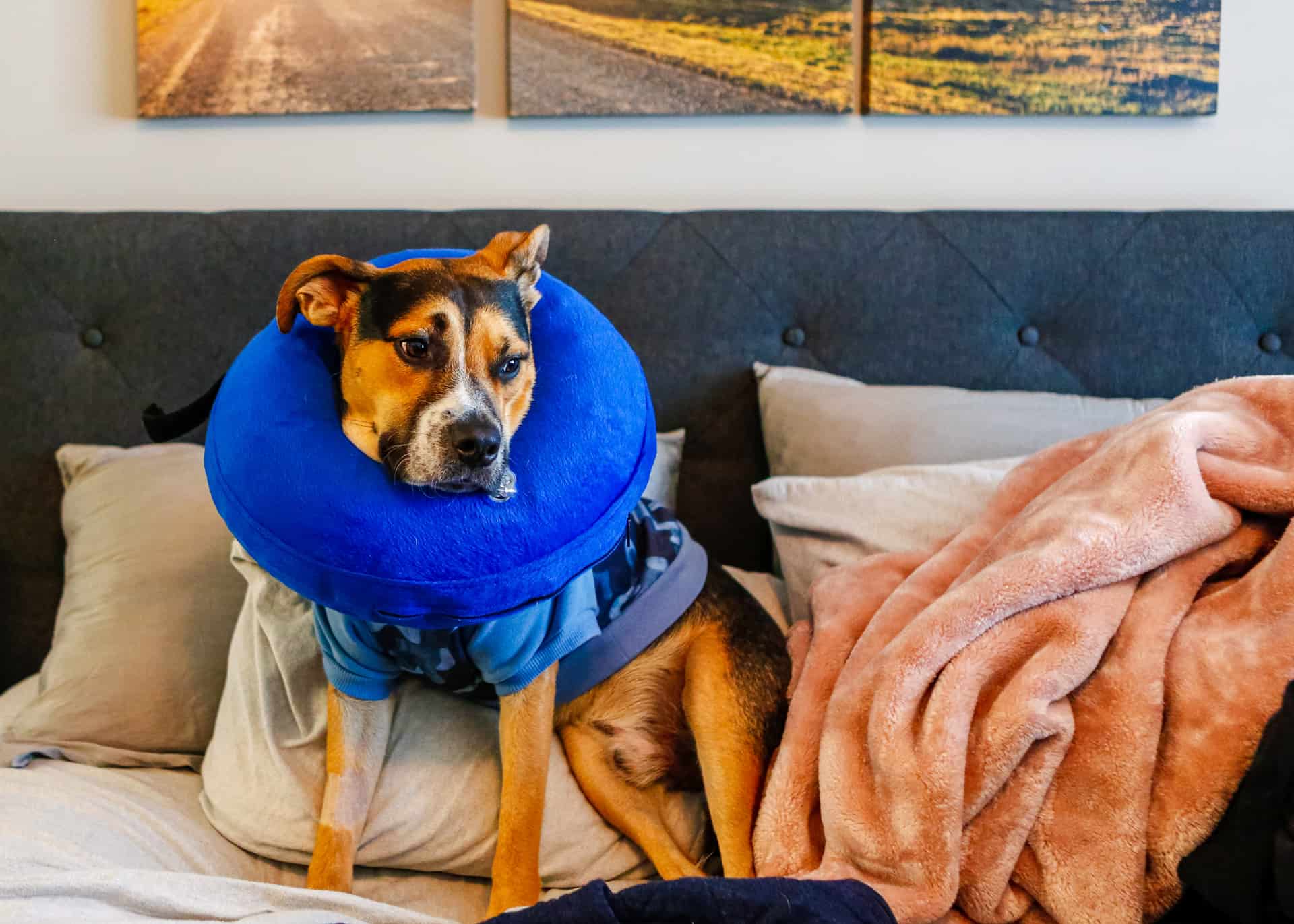The Importance of Spaying and Neutering to Curb Aggression
Spaying and neutering your furry friends is a must for reducing aggression. Male and female pets not spayed/neutered are more likely to show aggressive behavior.
Why is it important? It lowers the pet’s hormone levels, reducing their territorial behavior, aggression towards other animals and humans. Unneutered males are more likely to wander and fight with other males. Unspayed females may become aggressive during their heat cycle or when protecting their young.
It also prevents reproductive organ-related diseases, making your pet healthier and happier. To sum up, spaying/neutering your pets is a responsible and inexpensive way to prevent aggression and ensure their long-term health.
The Basics of Spaying and Neutering
Spaying and neutering is a must for controlling pet populations. It stops unplanned litters of puppies and kittens from heading to shelters or being put down. Plus, it can reduce health problems like certain cancers, and behavioral issues like aggression and too much barking. Let’s take a look at what spaying and neutering involves and how it can help with aggression.
What is the spaying and neutering process?
Spaying and neutering are surgical procedures that remove reproductive organs from cats and dogs. This prevents reproduction, as well as curbs aggression. It also reduces the risk of certain illnesses and unwanted behaviors.
The spaying procedure removes the ovaries and uterus from female pets. Neutering removes the testes from males. Both procedures are done with general anesthesia and are low-risk.
Recovery time is usually from a few days to a week. Your vet will provide post-op care tips for proper healing.
Pro tip: It’s best to spay or neuter pets between six and eight weeks old. This ensures speedy healing and avoids the first heat cycle.
What are the benefits of spaying and neutering your pet?
Spaying and neutering your pets can help control the pet population. There are also benefits for your furry friends.
Benefit 1: Population Control. Spaying and neutering minimizes the number of animals in animal shelters and on the streets.
Benefit 2: Medical Benefits. Spaying female pets eliminates the chance of uterine infections and breast tumors. Neutering male pets prevents testicular cancer and prostate problems.
Benefit 3: Behavioural Benefits. Spaying and neutering can reduce roaming, marking territory, and aggressive behavior. Neutered pets usually become calmer and more affectionate.
Pro Tip: As a responsible pet owner, spay or neuter your pet for their health and quality of life. It also contributes to pet population control.
When is the best time to spay or neuter your pet?
When to spay or neuter your pet depends on gender, breed and age.
For female cats and dogs, it is best prior to their first heat cycle, which is around 4-6 months. This reduces the risk of breast cancer by up to 95%.
Male cats and dogs can be neutered at 8 weeks, but it is recommended to wait until 6 months old. Neutering lowers the chances of testicular cancer and prostate problems.
The breed and size of your pet should be taken into account before deciding when to spay/neuter. For larger breeds, it’s best to wait until they are fully mature to avoid growth issues.
Spaying/Neutering has lots of health benefits and can help with aggression and unwanted behavior.
How Spaying and Neutering Can Affect Aggressive Behavior
Spaying and neutering are key for controlling pet aggression. Spaying and neutering can reduce the aggression seen in certain breeds. Neutering also reduces inter-dog aggression from unaltered pets. Let us discover more benefits of spaying and neutering for pet aggression.
How spaying and neutering affect hormone levels
Spaying and neutering can alter hormone levels in cats and dogs. This may result in a decline of aggressive behavior.
When female cats and dogs are spayed, their estrogen levels drop. This might help reduce maternal and territorial aggression.
Neutering males can result in the decrease of testosterone levels. This could help lessen dominance and aggression towards other males.
It is important to note that spaying and neutering alone may not totally stop aggressive behavior in pets. It works best when combined with behavior modification training.
So, as responsible pet owners, we should consider spaying and neutering as a way to help reduce aggressive behavior in our furry friends. This helps to ensure a safer environment for both the pet and the owner.
Studies on aggression levels in spayed and neutered pets
Studies show that spaying and neutering dogs can reduce aggressive reactions like biting, growling, and attacking. This is because these procedures reduce the production of hormones, like testosterone and estrogen, that cause aggressive behavior.
Also, pets which are spayed or neutered are less likely to wander away, reducing their exposure to aggressive triggers.
As a pet owner, it’s important to consider spaying or neutering your pet to improve their quality of life, and the safety of those around them. Talk to your veterinarian to decide the best timing and approach for this procedure, based on your pet’s needs and health status.
Positive effects on behavior after the procedure
Spay & neuter procedures have many positive results. Neutered males are less likely to mark territory, hump, or roam, which can cause aggression. Spayed females no longer go through heat cycles. This can reduce anxiety & aggression.
These procedures also lower the risk of certain cancers, prevent unwanted litters, and improve quality of life for pets. It is advised to spay/neuter pets at a young age. Ask your vet when is the best time.
Pro tip: After the procedure, give your pet lots of rest in a quiet, comfy spot.
Alternatives to Spaying and Neutering for Aggressive Behavior
Spaying and neutering are popular and helpful when it comes to calming aggressive cats and dogs. There are alternative means to achieve this too! Let’s explore some of these options that can be used to reduce aggression in pets.
Medication for aggressive pets
Medication can help treat aggressive behavior in pets, but it is not a substitute for spaying and neutering. Prozac, Paxil and Clomipramine are some commonly prescribed medications. However, side effects may occur and their efficacy differs pet to pet.
Spaying and neutering are the first line of defense against aggressive behavior in pets. They balance hormones and reduce territorial instincts. Furthermore, they prevent unwanted litters and overcrowding in shelters. Training and socialization exercises should be combined with these drugs to address the root cause of the aggression.
Behavioral training for aggressive pets
Behavioral training is key to tackling aggressive pet behavior. It can come from environment, genes, or improper instruction. Spaying and neutering may help in some cases, but there are other options.
- Socialization training: Introduce your pet to different places and situations as early as possible.
- Desensitization training: Help your pet become used to certain stimuli, like loud noise or other animals.
- Positive reinforcement training: Reward good behavior to reinforce it.
- Medication: Medicines to manage underlying issues.
Spaying and neutering can lessen aggression in some pets, but it’s important to understand that other factors, like behavioral problems, can cause it. A vet or professional trainer should be consulted to understand the issue.
Seeking the advice of a veterinarian or animal behaviorist
Aggression in your pet? Consult a vet or animal behaviorist. Spaying and neutering can help curb aggression, but there are other methods. A professional can assess your pet’s individual needs and medical issues causing the aggression. They can help find triggers and develop a tailored plan. Don’t forget, each pet is special and a professional will help you decide the best course of action for your pet.
The Controversy surrounding Spaying and Neutering
It’s acknowledged that spaying and neutering pets can stem aggression. But, there’s still some debate about it. Some think it might lead to obesity, joint pain, and other issues. Others think it could reduce the likelihood of certain cancers. People have different takes on this. So, let’s take a closer look at the discussion.
Arguments against spaying and neutering
Some people oppose spaying and neutering pets, but the advantages of these procedures surpass any potential disadvantages. Arguments against it may include:
- It being a cruel and unnatural procedure.
- Weight gain and other health issues.
- Personality or behavior changes in the pet.
However, research reveals that pets who are spayed/neutered are less likely to have health problems such as cancers and infections. Also, they are unlikely to show aggressive or territorial behavior, which can result in fighting and biting. Other benefits of spaying/neutering are:
- Reduced population of homeless pets.
- Decreased risk of the pet running away or getting lost.
It is essential for pet owners to be responsible for their pets’ health and behavior by spaying/neutering them.
Addressing concerns over spaying and neutering
Spaying and neutering your pets is important to curb aggression and other undesirable behaviors, though it’s controversial. Here are the benefits:
- Reducing Aggression: Help reduce biting, scratching, or aggression towards other animals or people.
- Preventing Health Issues: Spaying stops uterine infections and breast cancer in female pets. Neutering prevents testicular cancer and prostate disease in male pets.
- Population Control: Necessary to control pet population and reduce unwanted animals in shelters and on the streets.
Though there are worries about it, spaying and neutering remain an essential part of responsible pet ownership.
The importance of considering the benefits vs. risks
When considering spaying or neutering your pet, it’s key to look at the advantages and risks. Spaying/neutering helps decrease aggression, yet there are some possible dangers. Here are the benefits:
- In male pets, neutering reduces aggression and marking, as well as some cancers.
- In females, spaying avoids reproductive cancers and uterine infections.
Now, here are the risks:
- Pain, bleeding, and infection after surgery.
- Also, weight gain and behavior changes in your pet.
But the rewards outweigh the risks, so speak with your vet to determine the best option for your pet.
Tip- If you’d like to reduce aggression and look after your pet’s health, spaying/neutering is the way to go!
Conclusion
To finish, spaying and neutering can hugely benefit controlling aggression in pets. Even though surgery and cost should be kept in mind, the long-term advantages exceed the drawbacks. Spaying and neutering may not get rid of aggressive tendencies completely, but it will reduce the majority of the behaviour. This will help both owners and pets.
Final considerations and recommendations
As pet owners, it’s our moral duty to keep our pets safe, healthy, and well-behaved. One way we can do this is through spaying and neutering. Here are pointers to bear in mind:
- Benefits of spaying/neutering include reducing health problems and curbing aggression.
- Discuss with your vet the best age for surgery, depending on your pet’s breed and size.
- Provide post-op care and meds for pain management. Monitor their mobility closely.
- Spaying/neutering is a humane, effective way to ensure your pet lives well and without aggression towards other animals and humans.
- If you cannot provide proper care or pay vet bills, contact your local animal shelters or rescue organizations.
Ultimately, taking care of our pets helps create a better, kinder world for all living beings.
The importance of responsible pet ownership
Being a responsible pet owner is extremely important for both the pet and the owner’s health. Spaying and neutering is a key part of this responsibility. It can help to reduce aggression in your pet, making them easier to care for and less likely to attack other animals or people. Unneutered male dogs, for example, have higher levels of testosterone, which can cause them to be more dominant and territorial.
Spaying and neutering can also reduce the overpopulation of pets, which can result in euthanasia in overcrowded animal shelters. By spaying and neutering, you are helping to keep more pets in loving homes.
Responsible pet ownership includes taking care of your pet and contributing to your community. Spaying and neutering your pet is one way to do this.
Encouraging others to spay and neuter their pets to curb aggressive behavior.
Spaying and neutering pets can bring huge rewards. It leads to happier and healthier animals and households. Urge other pet owners to consider this option!
Studies show that spayed and neutered dogs are less likely to be aggressive. Hormones drive their behavior. Without them, they’re calmer and less territorial.
Plus, it prevents health issues like cancers of the reproductive organs. These can be painful and increase aggression.
Pet owners can help by educating friends and family on the benefits of spaying and neutering. Communities often have resources and programs to help with costs.
Let’s work together to create safer and happier homes for our furry friends and their families.
Frequently Asked Questions
1. What is spaying and neutering?
Spaying and neutering are surgical procedures that involve removing the reproductive organs of animals. Spaying involves removing the ovaries and uterus of female animals, while neutering involves removing the testicles of male animals.
2. How does spaying and neutering curb aggression in animals?
Spaying and neutering have been found to reduce aggression in animals by lowering the levels of hormones such as testosterone and estrogen. This makes animals less likely to engage in fighting or territorial behavior.
3. At what age should animals be spayed or neutered?
The best time to spay or neuter an animal is usually between the ages of four and six months. This is before they reach sexual maturity and start exhibiting aggressive behavior.
4. Is it safe to spay or neuter animals?
Yes, spaying and neutering are safe procedures when performed by a qualified veterinarian. The animals are placed under anesthesia and monitored closely to ensure their safety during and after the surgery.
5. Are there any other benefits to spaying and neutering besides reducing aggression?
Yes, spaying and neutering also have several other benefits, including reducing the risk of certain cancers and infections in animals, and helping to control the pet population.
6. Can spaying or neutering an already aggressive animal help to curb its behavior?
Spaying or neutering an already aggressive animal may help to reduce its aggression to some extent, but it is not a guaranteed solution. Proper training and socialization are also important in addressing aggression in animals.







